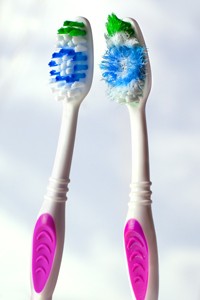 A really dead toothbrush—one badly worn and frayed, not necessarily just old—is like having no toothbrush at all.
A really dead toothbrush—one badly worn and frayed, not necessarily just old—is like having no toothbrush at all.
In fact, you’re probably doing more harm than good if your brush has seen better days.
All dead toothbrushes should be given a decent burial. If you have doubts about the life left in your toothbrush, bring it in at your next appointment, and we can assess the damage. We’ve seen a lot of sorry-looking brushes, but maybe yours will take the prize.
Why they should R.I.P.
- Plaque will stick with you. A dead toothbrush doesn’t stand up to plaque, which means you simply won’t get your teeth so clean. And a new brush works more quickly at plaque tasks.
- You can make yourself sick. Viruses love toothbrushes and stay lively a full week after you’re over the flu or a bout with cold sores. An ailing toothbrush makes a welcome home for bugs, especially when the bristles are bent and scraggly. Just when you’re feeling better, you can be reinfected. When you’re ill, change brushes every time you think of it.
- Watch those gums. A ratty toothbrush can damage gum tissue. A ratty, very hard toothbrush may even cause gums to recede.
